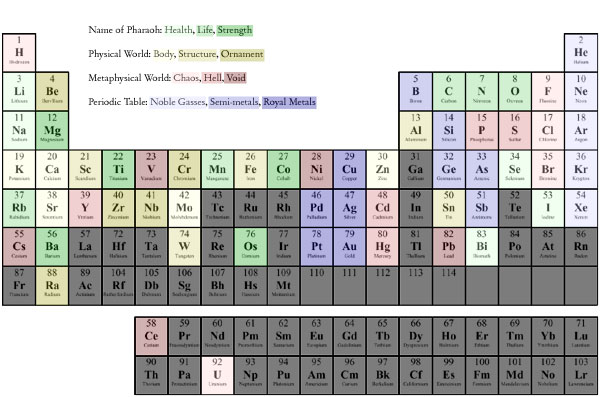The Periodic Table
This divinatory system is based on the Periodic Table of the
Elements. Sixty of the known stable 92 elements are represented, so
while each card is an element, not every element has a card. The deck
is organized into four families of 15 elements each, which may be
thought of as suits. These families are further divided into groups of
5 cards each.
Name of Pharaoh: This family comes from
the practice of ancient Egyptian inscriptions to follow the name of the
Pharaoh with three additional glyphs, Life, Strength and Health. The
Life group includes elements that are fundamental to living beings. The
Strength group consists of elements fundamental to both inner and outer
strengths. The Health group includes elements which are commonly
associated with medicines.
Physical World: This family represents the
mundane day-to-day facts of living in the world. The groups within this
family are Body, Structure and Ornament. The Body group refers to the
physical form life takes in the world. The Structure group consists of
elements used to create machines, tools and buildings. The Ornament
group refers to the needs of cultures to decorate themselves and
surroundings.
Metaphysical World: This family represents
the fear of the unknown. The groups within this family are Chaos, Hell
and Void. The Chaos group is the force of entropy. The Hell group
represents sources of anguish. The Void group are elements which
symbolize the abstract nature of metaphysics.
Periodic Table: This family represents the scientific
view of the world. The groups within this family are Noble Gases,
Semi-Metals and Royal Metals. Noble Gases are stable and non-reactive.
Semi-Metals have an air of mystery and defy categorization. Royal
Metals are prized as currency and for their innate magical properties.
Back to Main
![]()
